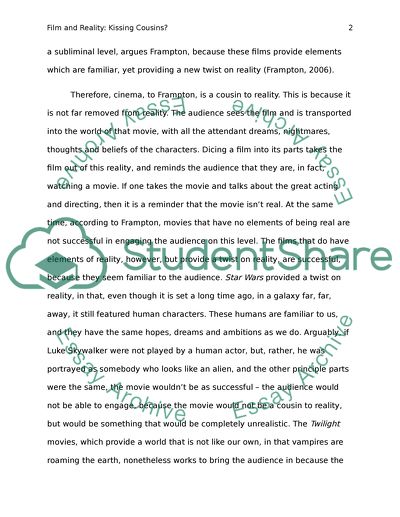Cite this document
(“Film and Reality: Kissing Cousins Essay Example | Topics and Well Written Essays - 2000 words”, n.d.)
Retrieved from https://studentshare.org/philosophy/1466429-film-and-reality-kissing-cousins
Retrieved from https://studentshare.org/philosophy/1466429-film-and-reality-kissing-cousins
(Film and Reality: Kissing Cousins Essay Example | Topics and Well Written Essays - 2000 Words)
https://studentshare.org/philosophy/1466429-film-and-reality-kissing-cousins.
https://studentshare.org/philosophy/1466429-film-and-reality-kissing-cousins.
“Film and Reality: Kissing Cousins Essay Example | Topics and Well Written Essays - 2000 Words”, n.d. https://studentshare.org/philosophy/1466429-film-and-reality-kissing-cousins.


